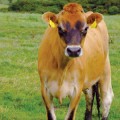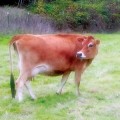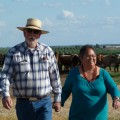Raw milk is often seen as hippie food, but when it comes to food, hippies were right about a lot of things (organics, granola, compost). And as more people discover the facts about where their milk really comes from, I think raw milk is about to hit the mainstream.
I spent an afternoon with raw-milk rebel Mark McAfee at his Organic Pastures dairy in Fresno, and I’m a bigger believer than ever in the value of raw milk. Organic Pastures is a raw-milk dairy, one of only two in the state. If there ever was a man to sell the country on the virtues of raw milk, it’s McAfee. He a former paramedic who took over his grandparents’ 650-acre farm west of Fresno. He says he spent the first half of his career treating people who were sick; now he helps prevent them from getting sick by producing raw milk. He’s a fast-talking, passionate advocate for raw milk, and after spending a few hours with him at his farm, I’m convinced if more people knew the real story about raw milk it would transform the dairy industry.
Raw milk is simply milk that hasn’t been pasteurized or homogenized. The milk goes from the cow straight to the bottle. Given our industrial food system that process freaks some people out. Isn’t milk from a cow kinda dirty? If it comes from the typical confinement dairy operation where the cows stomp around in mud and feces all day, you better believe it’s dirty—positively teeming with pathogens and nasty bacteria. That’s what the pasteurization is for. Heating the milk to about 145 degrees kills most (but not all!) of the nasty bugs. The process also happens to kill any of the beneficial bacteria and enzymes.
Raw milk, on the other hand, is alive with beneficial bacteria and enzymes. It’s hypoallergenic. It doesn’t produce lactose intolerance (pasteurized milk does). It promotes digestion. And it contains beneficial ratios of fatty acids. “If the cow is in the right set of conditions—green pastures, sun, no use of antibiotics—if the water being used to wash her and for drinking is clean and she’s eating the right kind of forage, the milk she is producing should be safe to drink,” says McAfee.
The way he describes it, there are two kinds of milk: raw milk fit for human consumption and raw milk not fit for human consumption. The latter kind is the milk that gets pasteurized and is what most of us drink. Mark’s cattle live their lives eating grass and also happen to live about four times longer than the typical dairy cow, because they’re fed a healthier diet (i.e., grass) and not milked as frequently. And they don’t need antibiotics to keep them well.
All the confusion and fear about raw milk benefits big industrial dairies, milk processors (the guys who do the pasteurization and homogenization) and the Food and Drug Association (the guys who regulate the industry). However, the confusion and fear do not benefit consumers or cows. Of course, there are dairies who sell raw milk that should not, because of poor practices, but a Grade A certified dairy like Organic Pastures, which is certified organic and accredited by Animal Welfare Approved for its humane treatment of its livestock, should put your mind at ease. The state tests the dairy’s milk, but Mark says he does his own testing 20 times a month.
McAfee’s business is growing about 20 percent a year and he’s about to launch the Raw Milk Institute, an industry advocacy group, to help other dairies go raw. “We see this really exploding,” he says.
Food editor Stett Holbrook is on the road, traveling in a 1965, 26-foot Airstream trailer with his family to research and promote Food Forward (foodforward.tv), a documentary series for public television about the people changing our food system—and to promote Boulevards New Media.
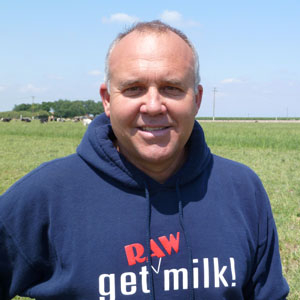
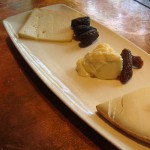 Food & Wine Events: June 29-July 6
Food & Wine Events: June 29-July 6  Chinese Taking Over Virtual World
Chinese Taking Over Virtual World 